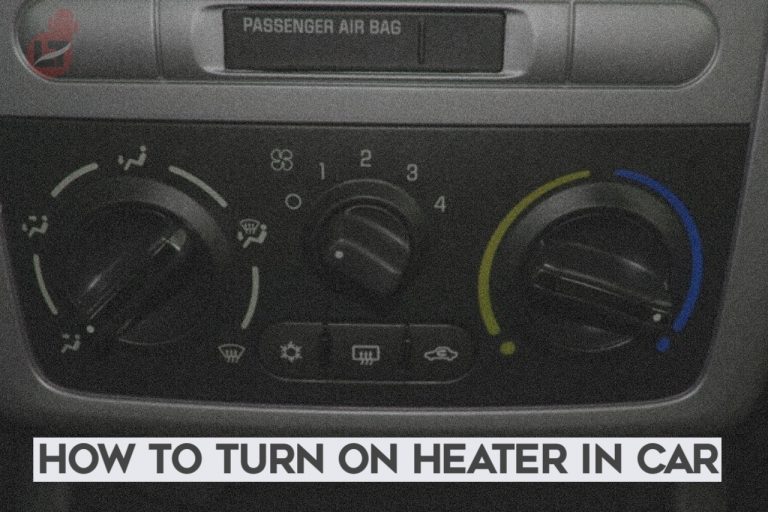If you live in an environment accustomed to cold climates, you might wonder how to turn on the heat in your Car.
Turning on the heater in your car can help you stay warm while driving in the cold. It will also allow you to see clearly and keep your windshield clear of frost and ice.
Before starting, make sure the temperature outside is not below freezing, as turning on the heat could cause ice to form inside your car.
Most modern cars have sophisticated heating, climate control, heating Ventilation, and Air Conditioning systems. However, most car owners may not fully know how to use these systems.
In this article, I will teach you how to turn on the heat in a car easily.
The Working Principles Of Heating Systems
The heater in your car was built for two main functions, but it is linked to several critical tasks beyond heating your vehicle, keeping you and your passengers relaxed during the journey, and keeping the engine cool. Understanding how your car’s heater works requires the following components:
- Heater Control Valve
- Blower Motor
- Heater Core
- HVAC Control Panel
- Heater Hoses
The components in your car’s cooling system work together with the heater; examples include the thermostat, water pump, coolant, and thermostat.
The heat generated by the engine must be dissipated so that the engine does not overheat when you don’t want it to.
Most of the heat your engine generates escapes to the exhaust system. The remaining heat is absorbed into the HVAC system. The coolant is transferred like refrigerant, which is moved to create cool air when the air conditioner is turned on.
The heat from the engine is transferred from the radiator to the heater core, which acts as a heat exchanger and allows the coolant to flow through. The heater control valve regulates the coolant inflow.
The device warms up, and the blower motor will force air over the heater core and into your cabin at the appropriate speed, depending on the settings on your HVAC control panel. It often takes about 5–10 minutes to reach the desired temperature.
How to Turn on Heat in a Car
To turn on your car heat, take the following steps:
- First, press the auto button on the right side of the control panel; this will initiate the automatic climate control function.
- Then, Locate and adjust the temperature control button.
- Please set it to the temperature of your choice using the heating controls.
- The display varies depending on the car model (simple to digital). It is typically measured in degrees C from low – to high 28°.
- Higher-end cars will have dual climate controls, which you could use to select different temperatures for the driver’s and passenger’s sides. To do this, you only need to press the “Dual” button, and your car heater will automatically switch between cold and hot air to maintain your preferred temperature.
How to Turn on the Heat in Your Car Manually
Let’s assume you have an older vehicle or you don’t feel like using the automatic heating system; then the following steps are to help you turn on the heater in your car manually:
- First, start your car engine and let it idle. Depending on engine size and fuel type, cars take about five minutes to heat up, so do not expect heated air until the engine is properly warmed.
- Adjust the temperature control button. Turn it clockwise to increase the heating if it is a dial nub.
- Turn on the car heater by switching on the fan and adjusting the heater fan to the speed of your choice (the blower motor serves as a fan that can be adjusted to a different rate).
Although the fan speed doesn’t alter the temperature, it increases the distribution of the selected temperature.
FAQs
How do I prevent my car from heating up in the first place?
You could do so many things to prevent your car from getting heated by sunlight. Such as:
- Always park under a shade. That is under a tree or canopy
- Ensure you cover your car seats
- Use a sunshade windscreen
- Keep the air-con maintained.
- Always Leave the glasses slightly open.
Does AC turn on the heat in a car?
Yes, the AC can turn on the heat in a car because the vehicle’s air conditioning system is designed to be used in conjunction with cold and warm air. When the AC is turned on, it helps to dehumidify the incoming air, which makes it dryer. This is ideal for defrosting the windows and reducing the humidity within the car.
Does heating in a car use fuel?
Yes, the car heater uses fuel to operate. However, it recycles already-used heat from the engine to power the vehicle, reducing excessive fuel usage.
How does heat work in a car?
The engine releases warmth, passing through a small radiator called a heater core, which acts as a heat exchanger and allows coolant to flow through. Thus, the inflow of coolant is regulated by the heater control valve. The car automatically gets warm as the engine’s heat is carried by coolant into the heater core.
Does heat use more gas?
No, using the heat in your car does not burn any extra gasoline. On a perfect day, the engine heats up as the vehicle is turned on and driven around. When the heat is on, it goes from your engine to your radiator.
Where is the car heater?
The car heater is located in your car’s dashboard. It looks like a small radiator. It simply releases air from the heater core to the passenger side of your vehicle.
As an Amazon Service LLC Program Associate, V. Auto Basics earns from qualifying purchases. See Our Affiliate disclaimer.
